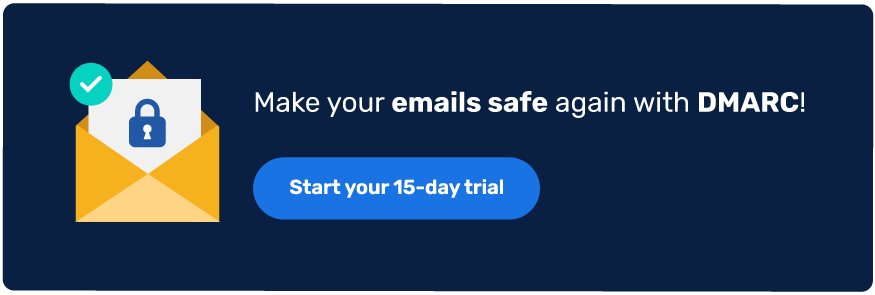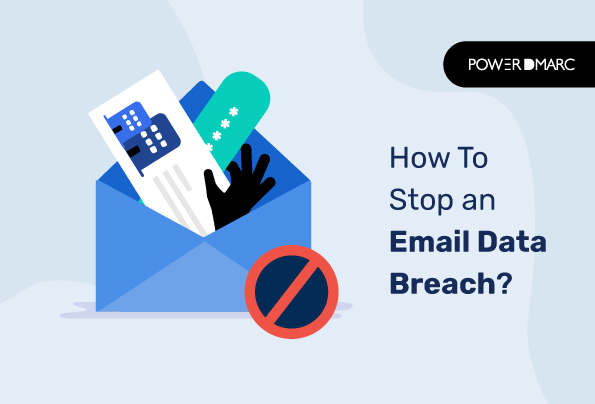An email data breach may alter the direction of your business rather than just causing momentary setback. Sensitive information exposure can seriously affect people, businesses, and governments alike.
Hackers can access you via the internet, Bluetooth, text messages, emails or the online services you use.
Without due care, a little flaw can result in a significant email data breach.
When an email is breached, the consequences can be disastrous. Hackers impersonate email header information (such as addresses and domain names) to send out phishing emails that result in the loss company data. Sometimes, these attacks are simple and can be quickly detected and stopped, while at other times they have far-reaching effects.
If your company uses email as a primary channel for communication with clients, customers and employees, then you need to know how to take actionable steps towards preventing an email data breach.
Key Takeaways
- Email data breaches can have severe consequences for businesses and individuals alike.
- Regular network monitoring is essential for detecting and preventing unauthorized access to email accounts.
- Storing all company data in one location can help mitigate the risks associated with email data breaches.
- Implementing two-factor authentication significantly increases account security against breaches.
- Using DMARC reports helps you identify and respond to email authentication failures effectively.
What is an Email Breach?
An Email breach is a term that is used to describe any action involving unauthorized access to an email account. An email account can be a virtual mailbox where you store your personal and business correspondence.
When someone breaks into your email account, they may be able to read your emails or even forward them without your permission. In some cases, hackers will change your password so that they can access all of your accounts on the same server. It means that you’ll have trouble logging into your email again due to the changed password.\
Simplify Security with PowerDMARC!
How To Check If an Email Account Is Compromised?
If you think that your email account might have been compromised, then there are a few things that you should consider.
In case you receive an email from your bank or other financial institution but it seems fake, then you shouldn’t click on the link in the message. If the email doesn’t come from the company where you typically bank and the sender address differs from what you use for banking, then it might be a phishing scam originating from a spoofed domain. This signifies that your bank’s domain has been compromised and spoofed by attackers.
A sign that your account may have been compromised is if someone has access to your account and is sending emails from your own domain.
If you are in doubt that someone has access to your account but can’t figure out how they did so, then contact the company immediately so that they can help protect against further attacks.
How To Stop an Email Data Breach?
Identity theft or other crimes can be committed using your personal information if you aren’t careful. The following tips will help you prevent an email data breach:
Monitor the Network
When you have an email server, it’s essential to monitor it regularly. Many organizations are now spending a lot of time and money on security solutions meant to protect against attacks. But if you don’t monitor your network, what good is it?
Keep All the Data in One Place
It’s not just about monitoring; keeping all your data in one place is also very important. Some organizations allow employees to send emails from their accounts and then have them forwarded to the company’s email server for distribution. Although this might work for some companies, others may want their employees to use only the corporate mail server for sending emails. A data breach of your email account can only be prevented if all of your data is kept in one place.
Change Your Passwords ar regular intervals
The hackers are always searching for new ways to access and use your accounts for their benefits. Hence, they try to find weak or easily guessed passwords that you use when signing up with various websites and services. Here, frequently changing your passwords can help protect your accounts.
Use Two-Factor Authentication
It is an extra layer of security that requires both something you know (password) and something you have (something like an authenticator app or hardware token). This makes it much harder for hackers to gain access to accounts by using stolen credentials without access to other factors.
Don’t Store Passwords in Plain Text
If you use email services to send and receive sensitive information, you should take steps to prevent a data breach. A breach can lead to identity theft, fraud, and increased regulatory scrutiny.
You should consider using an encryption tool or application that scrambles sensitive data before it’s sent over the Internet. If you need to store passwords securely, then tools like 1Password or LastPass can help prevent hackers from accessing your personal information.
Use DMARC Reports to stay updated on authentication failures
DMARC tells you whether an attacker is trying to impersonate your domain. The authenticity of every email originating from your own domain is verified using the DMARC email authentication standard. It is a reliable, secure technology that can distinguish between honest senders and fraudulent phishing attempts, with DMARC reports being sent to you help you monitor your authentication results.
You can ensure that all of the legitimate emails are delivered and avoid phoney emails being sent from your domain by using the DMARC analyzer tool. You’re doing more than just protecting your brand when you stop spoofing. You’re ensuring
How to Get Started?
To implement DMARC Analyzer sign up on the PowerDMARC platform and register your domains:
- Publishing an AI generated DMARC record to your DNS with a DMARC policy, and enable aggregate reporting.
- You will receive complete visibility and analysis of your email authentication results
- By examining your reports, you can easily identify and take action against harmful sources while approving the trustworthy ones.
- You are protected from domain spoofing and phishing attacks with a DMARC policy of p=quarantine or p=reject!
The Verdict
Although it is relatively easy to think of a solution, preventing email data breaches in real-time can be quite tricky. After all, any employee can unintentionally expose a company’s sensitive data by clicking on a phishing link attacked to a fake email.
Implementing a well-rounded email security strategy keeping the above-mentioned points in mind that benefits you in more ways than one. Shift towards a safer email experience starting today!

- Top 7 Best Email Verification Tools for Secure Delivery - November 28, 2025
- CNAME vs A Record: Which DNS Record Should You Use? - November 18, 2025
- DMARC MSP Case Study: How PowerDMARC Secures Amalfi Technology Consulting Client Domains from Spoofing - November 17, 2025



